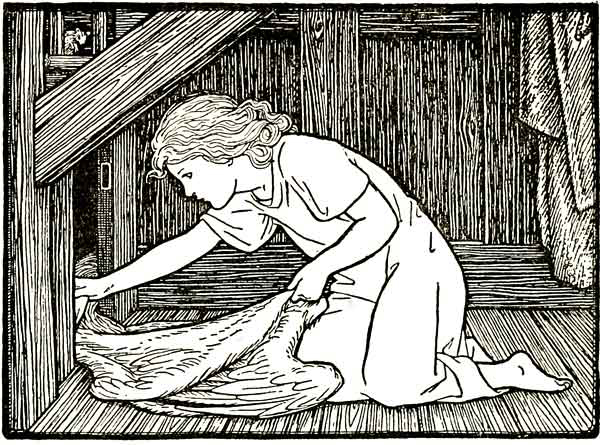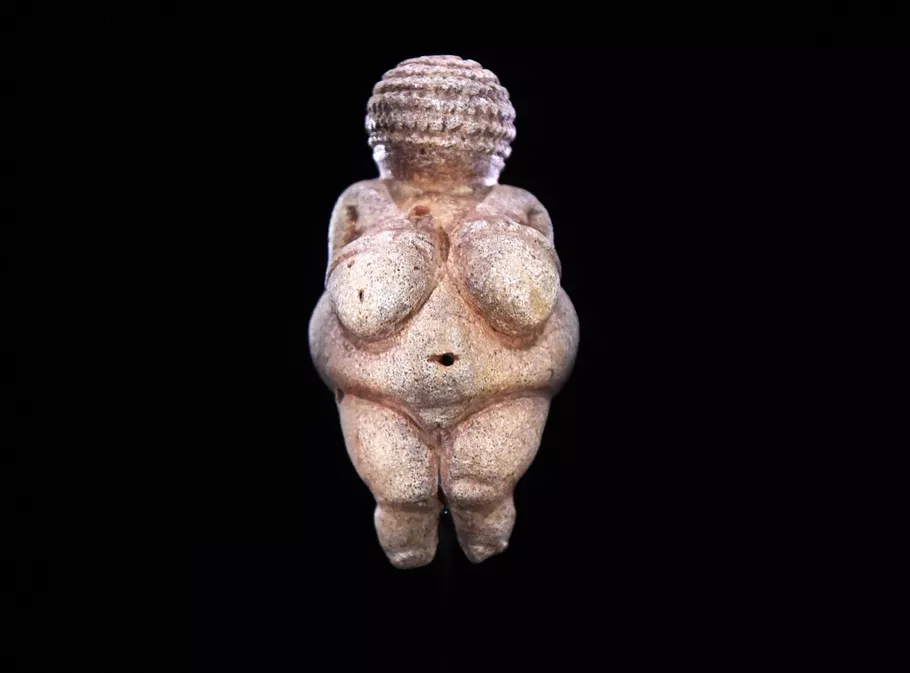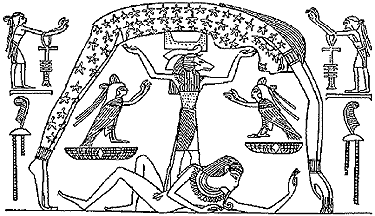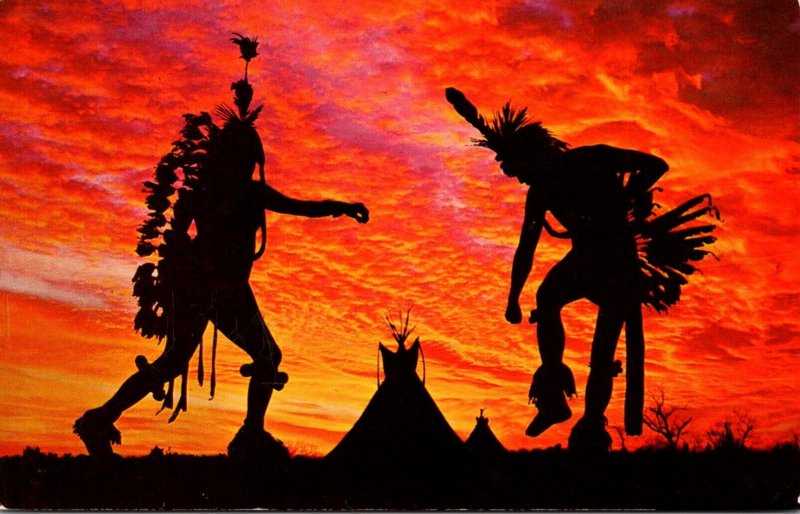Once upon a time
in a tiny village nestled amid rolling hills and ancient forests lived a young woodcutter. One fine day, returning from work, he hears laughter.
Deciding to investigate, he finds some beautiful women bathing in a pond, and on the water’s edge a pile of feathered cloaks. Hidden from view, he manages to grab one of the fluffy garments and stuffs it into his bag.
Once the group of bathing ladies decide they’ve had enough, they put on their cloaks, transform into swans and fly away. All except one maiden who can’t find her feathers. Pretending to offer assistance, our lovestruck lumberjack manages to lure the distressed damsel back to his digs. Eventually they get to know each other, marry, have kids, live happily and prosper.
Until one day, the ex-swan maiden discovers her feathered cloak stashed away, figures out the devious deception, and flies off forever. Amen.

The network of narrative
If you’re at all interested in traditional European folklore, this swan maiden story probably sounds familiar. A lesser known fact is that the tale is also related to the Cyclops story. As is the Amazon myth about the existence of a powerful, warrior tribe consisting only of women.
In the last chapter we mentioned that the Cyclops myth was part of a family of stories that evolved from an older narrative, about a group of primeval guardians of all the natural resources necessary for human survival. The tales of powerful, magical maidens and the Cyclops type story are in turn related via a common ancestral narrative originating in Africa.
As far as we can tell, the original mythology, carried out of Africa by our ancestors around 60000 years ago, goes roughly as follows : The Earth is a feminine entity that gave birth to humanity. We all emerged from holes in the ground, from caves. Women emerged from the Earth with similar creative powers and abilities. Not only were they also able to give birth to tiny humans, but they controlled all the essential resources and possessed all the important cultural knowledge. The primeval guardians of knowledge, or the master of animals we encounter in later legends, were initially women.
This still seems to be very much the case today, my wife definitely holds all the arcane knowledge of what’s what : how to behave in public, when to use the precious cutlery and much more.

In any case, the notion that men must acquire and subdue women in order to be happy and prosper, is still alive. We could even consider it a Jungian archetype. I’m referring to the ongoing struggle in many countries to control reproductive rights. Or the violence and dishonesty that sometimes still exist in our desire for intimate sexual relationships.
Even the Amazon idea of a separate society for women still crops up in modern times. Not just in books and movies, like DC’s “Wonder Woman”, but in serious political rhetoric. For example, in the year 2000 Andrea Dworkin called for the establishment of a “woman’s homeland” as a response to the ongoing “oppression”.
The Enuma Elish
It’s not surprising that we, in the modern world, are able to share and record stories with some accuracy over time, thanks to the written word – we’ve got ancient manuscripts, books and even facebook. But how did we manage to conserve these stories so faithfully during the millenia before writing was invented? All we had was our oral traditions. And despite that, scholars are telling us that myths were passed down with unwavering precision over generations. Any changes in the narrative appear to actually be deliberate. Names and characters were replaced on purpose in order to make some political statement, due to the adoption of a new religion for example. Because we wanted to differentiate ourselves from a neighboring civilisation, with whom we had become enemies. Or because we were a desert faring peoples and the story had initially been invented in a lush tropical region that was completely alien and incomprehensible to us.
This happens even in literary societies. We have examples of narratives being adapted to the changing cultural environment. A case in point would be a comparison of the earliest versions of Genesis from the old testament (written around the 10th century BCE) and something called the Enuma Elish (13th century BCE).
The Enuma Elish was a Babylonian creation myth that deals with a battle between Marduk, the storm god and Tiamut, the god of the sea and primordial chaos. The biblical creation narrative shares a similar cosmology and uses so many of the same words and ideas that we have to conclude that the writers of the bible knew it well. Both stories co-existed for a while in the same era, in the same part of the world and were shared by the cultures living there and then. The Genesis narrative uses old stories, familiar to the ancient Isrealites, but retells them in a way that turns the old divinities into aspects of the new supreme God’s creation.
For example, if we consider the earliest Hebrew version of Genesis, both stories begin with the words : “When on high…”. We are then presented with the image of the wind gliding over the waters : the spirit of God over the deep in one, and the storm god over the sea goddess in the other. Moreover, the Hebrew word for “deep” has the same etymological root as “Tiamat”, the sea goddess.
In both cases, a tiny vital, biotic bubble is created, surrounded by chaotic waters. A dome of life, which in the biblical version consists of the firmament above and the land below.

The tree of life and the snake divinity hanging out nearby, are also important ancestral entities in folklore that become lesser characters in the new story.
It seems obvious that the old, familiar narratives were being transformed deliberately to express the new monotheistic worldview.
Ritual indoctrination
Our difficulty lies in accepting that primitive, illiterate folk were able to conserve information accurately over time. Tough, everything seems to indicate that they were very much able to. It’s the most reasonable explanation for why different cultures who have had no contact for tens of thousands of years, are still telling the same stories. That those stories evolved in conjunction with our migratory history, further confirm the fact.
The thing is, they weren’t playing “Chinese whispers” (or “Arabian telephone” which is the unfortunate name we use here in France). When we study non-literate societies today we can see that storytelling is more akin to theater or pantomime. It’s an immersive, group ritual where nearly everyone is already familiar with the tale being told. It’s participative : if anyone deviates from the recognised narrative they are immediately corrected. It’s important, we’re not telling silly fairy tales, we’re relating essential “truths” about the world, our ancestors, about who we are and our relationship to the invisible “supernatural” powers around us. And we are very, very good at believing and integrating narrative, it’s part of our nature.
I’m highly confident in my ability to accurately tell the story of Little Red Riding Hood, and that’s just a weird folk tale of no importance whatsoever that I’ve only heard a few times in my life. Now imagine if this story was told every year, that it was considered to be part of my tribe’s identity. Imagine if we all danced the dance of the young girl in her red cloak together, and if the wolf and grandma danced with us.

Parochial paradigms
So, what have we learned from all of this? Well there’s the simple historical fact that the tales told by bygone civilisations, still survive today.
Take ghosts or souls, for example, the idea that we continue to exist as an independent entity after the death of the body. We know that the old Norse, Egyptian and Greek religions promised some kind of afterlife, as do many traditional African religions. It’s easy to imagine that early humans could have had the same intuition. Despite being extremely ancient it’s still a powerful and widely held belief.
We crave explanations, and the narratives that we feel best explain what’s what, become our vision of reality. It might be a bit tenuous, but our relationship to stories could be described as parasitic. Insomuch as stories need humans to survive and propagate, and in return they affect our own survival and behavior.
There is of course a major difference between my modern, educated worldview, and traditional folk beliefs. We got science now. Whereas primitive man had to rely exclusively on their subjective, necessarily anthropomorphic intuition in order to imagine why – why the sun rises every morning, for example – we know. We know that the morning light is not due to some magical old lady lighting a huge fire when she wakes up at her campsite way out East.
